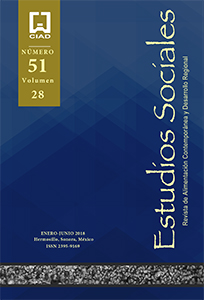Políticas públicas para los municipios más pobres de México
Public policies for the pooest municipalities of Mexico
Resumen
Objetivo: proponer una tipología que permita distinguir intensidades de pobreza entre los municipios más pobres del país y, a partir de ésta, sugerir políticas públicas diferenciadas. Metodología: a partir de estadísticas oficiales, se aplican métodos estadísticos multivariados para formar conglomerados y definir propuestas de política pública. Resultados: en siete de cada diez municipios, que representan el 24% de la población, la pobreza es generalizada, pero al agruparlos en cuatro conglomerados se observan distintas prioridades y potencialidades. Limitaciones: las estadísticas municipales disponibles de pobreza son del año 2010. Conclusiones: la pobreza se debe agrupar, priorizar y combatir con una estrategia mixta de universalización y focalización. Cada conglomerado demanda una manera distinta de combinar o elegir entre inversión pública, transferencias condicionadas y fomento al empleo rural agrícola y no agrícola.
Palabras clave:
Desarrollo regional, análisis multivariado, focalización, pobreza, políticas públicas, tipología.Abstract
Objective: Propose a typology that allows to distinguish intensities of poverty among the poorest municipalities of the country, and from this, suggest differentiated public policies. Methodology: Based on official statistics, multivariate statistical methods are applied to form clusters and define public policy proposals for each. Results: In 7 out of 10 municipalities that represent 24% of the population, poverty is widespread, but when grouped into four conglomerates, different priorities and potentialities are observed. Limits: The municipal statistics available for poverty are from the year 2010. Conclusions: Poverty must be grouped, prioritized and combated with a mixed strategy of universalization and targeting. Each conglomerate demands a different way of combining or choosing between public investment, conditional transfers and promotion of rural agricultural and non-agricultural employment.Keywords:
Regional development, multivariate analysis, targeting, poverty, public policies, typology.Descargas
Publicado
Cómo citar
Número
Sección
Para que sean publicados artículos, ensayos y reseñas críticas en Estudios Sociales, la revista debe contar con la aceptación de parte de los autores/autoras de las condiciones siguientes:
1. Los autores conservan los derechos de autor y ceden a la revista el derecho de la primera publicación del trabajo registrado bajo la licencia de Creative Commons Reconocimiento-NoComercial (CC-By-NC) que permite a terceros utilizar lo publicado, siempre y cuando mencionen la autoría del trabajo y a la primera publicación en esta revista.
2. Los autores pueden realizar otros acuerdos contractuales independientes y adicionales para la distribución no exclusiva de la versión del artículo publicado en esta revista (por ejemplo: incluirlo en un repositorio institucional o publicarlo en un libro) siempre y cuando indiquen, claramente, que el trabajo se publicó por primera vez en esta revista.




















